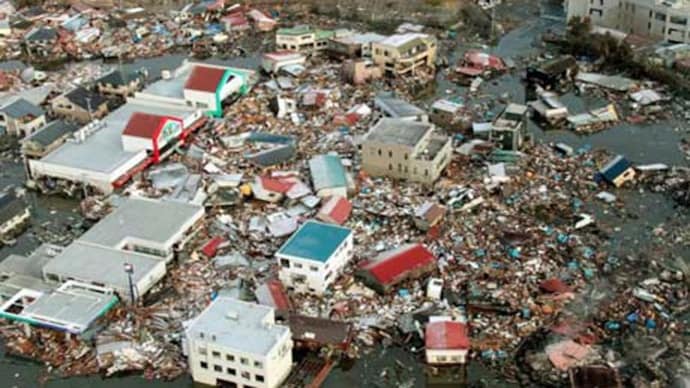Japan earthquake and tsunami of 2011: Facts and Information
Japan earthquake and tsunami of 2011: Facts and Information

On March 11, 2011, a magnitude-9 earthquake shook north-eastern Japan, setting free a savage tsunami.
The effects of the great earthquake were felt around the world, from Norway's fjords to Antarctica's ice sheet. Tsunami wreckage continues to surface on North American beaches two years later.
What was the cause?
The 2011 Tohoku earthquake struck offshore Japan, along a sub-duction zone where two of Earth's tectonic plates have a collision. In a sub-duction zone, one plate slides beneath another into the mantle, the hotter layer beneath the crust. The great plates stick and slip, causing earthquakes. East of Japan, the Pacific plate dives beneath the overriding Eurasian plate. The temblor completely released centuries of built up stress between the two tectonic plates, a recent study found.
Number of people who died: The confirmed death toll is 15,890 as of February, 2015.
Some important facts about the disaster:
The total damage material from the earthquake and tsunami is estimated at about 25 trillion yen (300 billion dollars).
As the tsunami crossed the Pacific Ocean, a 5-foot high (1.5 m) wave killed more than 110,000 nesting seabirds at the Midway Atoll National Wildlife Refuge.
More than 1,000 aftershocks have hit Japan since the earthquake, the largest being a magnitude 7.9.
The tsunami also broke icebergs off the Sulzberger Ice Shelf in Antarctica.
The earthquake produced a low-frequency rumble called infrasound, which traveled into space and was detected by the Goce satellite
Japan had around 54 nuclear reactors, with two under construction, and 17 power plants, which produced about 30% of Japan's electricity at the time of the earthquake. (IAEA 2011)
There are six reactors at Tokyo Electric Power Company's Fukushima Daiichi plant, located about 65 km (40 miles) south of Sendai
A microsievert is an internationally recognized unit measuring radiation dosage. People are typically exposed to a total of about 1,000 microsieverts in one year
The earthquake shifted Earth on its axis of rotation by redistributing mass, like putting a dent in a wobbling top. The temblor also shortened the length of day by about a microsecond
About 250 miles (400 km) of Japan's northern Honshu coastline dropped by 2 feet (0.6 meters)
The jolt moved Japan's main island of Honshu eastward by 8 feet (2.4 meters)
The Pacific Plate slid westward near the epicenter by 79 feet (24 m)
In Antarctica, the seismic waves from the earthquake sped up the Whillans Ice Stream, jolting it by about 1.5 feet (0.5 meters)
In Norway, water in some fjords pointing northeast toward Japan (up and over the pole) sloshed back and forth as seismic waves from the earthquake raced through
Earthquake a surprise
The unexpected disaster was neither the largest nor deadliest earthquake and tsunami to strike this century. That title goes to the 2004 Banda-Aceh earthquake and tsunami in Sumatra, a magnitude-9.1, which killed more than 2,30,000 people.
Worldwide effects of the disaster
The astonishing thing was that the tsunami waves also travelled across the Pacific, reaching Alaska, Hawaii and Chile. In Chile, some 11,000 miles (17,000 km) distant, the tsunami was 6.6 feet (2 meters) high when they reached the shore.
The flow of water carried tons of debris out to sea as it moved away. Japanese docks and ships, and countless household items, reached on U.S. and Canadian shores in the subsequent years. The U.S. Coast Guard even opened fire on and sank the derelict boat 164-foot Ryou-Un Maru in 2012 in the Gulf of Alaska. The ship started its journey in Hokkaido.